How Panzer Dragoon Defined an Era
Genre defining is a superlative that describes many games in Sega’s back catalogue, as you may expect from a videogame titan that defined many genres. The Rail Shooter is one such example, a genre that exploded with the arrival Yu Suzuki’s Space Harrier, which set the standard for the genre until it was redefined again with After Burner, and then the likes of Thunder Blade and Galaxy Force.
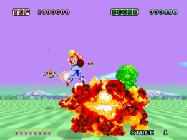
Namco’s Star Blade introduced polygons to the genre in 1991 and Star Fox essentially borrowed from that and Sega’s Super Scaler’s two years later to produce a greatest hits of sorts with a Nintendo twist.
But where could the genre go from here?
The answer would come as Sega sought new software for its upcoming Saturn console, asking for concepts for a game in the shooter genre. Up stepped 23 year old Yukio Futatsugi who pitched the idea of a game featuring an armoured dragon, with a vision that would redefine the rail shooter genre and beyond…
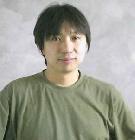
The principal concepts that would serve as the foundation for the Panzer Dragoon series were defined very early on in Futatsugi’s pitch. The player would control a dragon as opposed to the tanks, planes and space ships that had been every present in rail shooters to that point. The setting of a post-apocalyptic world was also defined very early on.
In the three months afforded to developers to flesh out their pitches prior to development, Futatsugi drew on his inspiration from the novel Hothouse by Brian Aldiss and various anime and manga series with similar dystopian settings. Artist Manabu Kusunoki also took inspiration from works such as Nausicaä Valley of the Wind, as well as the 1984 Dune adaptation and the artist Moebius.

With the project approved and the story established, work began in earnest with an eye on the Sega Saturn’s Japanese launch date.
Initial images depicted a rather green Western looking dragon in previews, but this was quickly changed to give the dragon a more unique look befitting the post apocalyptic science fiction setting, while also showcasing the Saturn’s next gen animation capabilities.
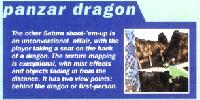
Expectation was building around this unique looking and visually impressive title, which was set to be one of the highlights of the Saturn’s Japanese launch.
Unfortunately, the challenge of delivering such an ambitious title in time for the 1994 Japanese launch, especially with development hardware that was, to put it mildly, in flux, with even the specs of the console itself not finalised during the project’s beginnings.
But Japanese Saturn owners didn’t have room wait too long, because in March the next year, Panzer Dragoon came swooping in to the Saturn’s library to much fanfare. This also meant that despite the rushed Western Saturn launches, Panzer was available at launch (or just after in the PAL regions).
And that was a great thing too, as while critics had cooled somewhat on the flawed ports of Virtua Fighter and Daytona USA, Panzer Dragoon became the showpiece in the Sega Saturn library.

Panzer Dragoon’s critical reception upon its Japanese release was that of universal acclaim. And while that positivity became slightly less enthusiastic once the Western launches rolled around (which I thought never seemed fair to any of the Saturn’s titles) it maintained the air of the console’s first blockbuster, and to this day is offered as the game that perhaps should have replaced Virtua Fighter as the Sega Saturn pack-in title in one of the many “What if” Sega scenarios.
With this brief background on Panzer Dragoon’s journey to retail out of the way, we can discuss what the game actually is, how well it did it and whether it really did redefine… anything.
As we established, Panzer Dragoon was pitched as a game in the “shooter” genre, per Sega’s request at the time, and more specifically a rail shooter in the vein of After Burner, Space Harrier and Star Fox.
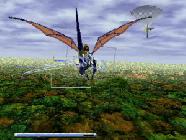
Two things make the gameplay both unique and a step beyond what had come before. The idea of a rail shooter had existed since the early 80’s so panzer Dragoon needed something special to stand out.
The first is how the dragon’s movement and the targeting reticule are tied together, and what I mean by that is that they maintain a degree of independence. While the rail shooters I mentioned tie movement to the targeting, Panzer does it in a similar way, though the targeting is tied to the riders gun, while the dragon will follow it on screen at a different speed. so while both will move in the same direction, they’ll do so at different speeds. This is key to making you and the Dragon feel like separate entities, and the gameplay implications are subtle, but it’s a wonderfully unique approach.
The more significant addition is the 360-degree view. Using the Saturn controller’s shoulder buttons, the camera can be rotated all the way around your dragon and rider, allowing you to combat enemies coming from behind and to your flanks. This again, enhances the immersion in the world of Panzer Dragoon, while expanding the gameplay of the rail shooter genre further into the third dimension, and in a way that I do not think we’ve seen since.
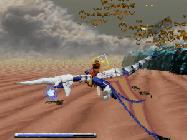
Gameplay is relatively straight forward in terms of control, much like Panzer’s peers in the genre. You attack with the A, B or C buttons, all triggering the same shooting attack from your riders blaster. Holding the attack button allows you to lock onto enemies and fire homing blasts from your dragon. An idea borrowed from Galactic Attack (Rayforce/Layer Section/Gunlock) but implemented so well it would find itself in to Star Fox 64 a year later.
The shoulder buttons rotate your camera, while the X, Y and Z buttons change your camera. For me the default camera suited the best, especially as unlike the games’ sequel, Dragon movement is restricted when not facing forward, but it’s nice to have the options which align to the Virtua Racing and Daytona camera offerings.
As you’d expect, the objective of the game is to shoot down any and everything in your path. You start with a single Credit, meaning you get one continue once your life bar is depleted. However, upon clearing a level, called Episodes, you are presented with the percentage of enemies you’ve destroyed, the more you kill, the better your chances at earning more credits, and you’ll need them.
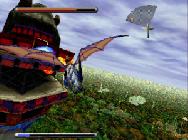
Panzer Dragoon has only seven Episodes, but each takes between five to ten minutes to pass. They start easy, but soon get devilishly tricky. Episode 5 in particular can be especially brutal as your dragon is pursued by the Imperial Armada, and takes on a boss in its finale who’s deluge of projectiles in both of it’s forms can vaporise your health in a heartbeat.
Speaking of bosses, they deserve a special mention, they’re all imposing and visually impressive foes who are either huge, diverse, well animated or a combination of all of the above. From enemy warships, to the Dark Dragon, from transforming mechanical monstrosities to the monstrous final boss, each battle feels like an event.
There are different modes of play, Easy will end at Episode 4 and give you a bag full of continues, whilst Normal and Hard difficulties will give players a real challenge.
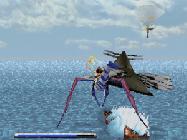
This is all held together by blockbuster production values, at least for the time. Panzer Dragoon opens with a five minute long CGI introduction, detailing how our hero (not named in game, but known as Keil Fluge in ancillary media) inherited the dragon and by extension it’s quest to battle it’s dark counterpart.
This carries into the game proper with some stunning visuals quite unlike anything else at the time. The Saturn’s unique capabilities are put to great use as the infinite planes VDP2 produces give the game a true sense of depth. Polygonal pop-in remains, but it’s not as egregious as, say, Daytona USA on the Saturn. Moreover, the desolate yet beautiful post-apocalyptic setting is realised perfectly with this visual approach, the influence of Mobius and such being there to see.
It’s not just the environment, enemies are well animated, particularly the bestial ones. Wings flap, the tendrils of giant worms wriggle as the beasts burst in and out of sand dunes, and your enemies react to your attacks, particularly the stage 4 boss who will shield itself from your onslaught.
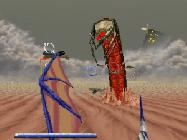
But the star of the show is the Dragon, who never stops moving, wings flapping and tail snaking behind as it soars through stages, and climbs and descends around the screen following your targeting reticule.
The sound design too is, quite frankly, perfect. The dragon screeches, the enemy screams, the roar of imperial machinery, the thunder of gunfire, it all feels real and tangible. It’s a beautiful orchestra of brutal techo-organic warfare.
This is coupled with voice acting in the intro, ending and cutscenes, all spoken in Panzerese, a fictional language that is a mix of Ancient Greek, Latin and Russian, but all delivered fantastically by the games voice actors in a way that feels a step up for the time.
But the highlight of the audio is the orchestral soundtrack. Panzer Dragoon is not scored like a normal videogame. Rather, the predetermined nature of a rail shooter means that the journey of the player was already mapped out, and thus composer Yoshitaka Azuma sought to score the game like a movie, accounting for all of the stages shifts, changes of pace and set pieces. Not only does this give the game the near perfect feel alongside the minute to minute gameplay, but the music is simply sublime as well.
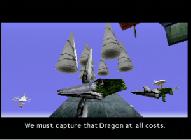
So did Panzer Dragoon change anything? Did it even redefine its genre?
There’s an argument that panzer Dragoon is no more than an impressive title for it’s time with relatively simple arcade style gameplay and that is a perfectly valid view. Contemporary reviews stated “that the game may come off as “just a simple shooter”, it is at least a “very good one””, and “basically, the ultimate evolution of Space Harrier”
I, however have a slightly different view.
In its introduction of the rotating and panning camera, as well as the lock on mechanic, panzer Dragoon pushed the rail shooter onwards in new and innovative ways. Ways which have been felt, more in the Star Fox series than any other, and some more successfully than others. But it pushed the genre into what many would consider the genre’s peak with the greatest titles for that genre entering the 3D space in the next few years.
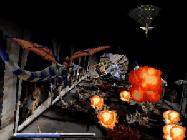
But I feel it goes deeper than that.
If you’ll indulge me for a moment, I feel this was a fully voiced (language aside), orchestrally scored, fully 3D adventure with a deep and meaningful story. Where before Panzer Dragoon had we seen this Hollywood level production on a console?
Panzer Dragoon’s opening is nearly as iconic as the game itself, and that is a section where the player assumes a more passive role as they are welcomed into the games’ world, immersed in its story where the narrative and setting are just as important as the game itself.
During gameplay, the sublime soundtrack elevates the key moments just like you would hear when watching something on the silver screen, and this is punctuated by cutscenes that play out during various parts of the stages.
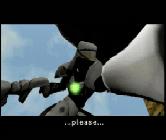
Panzer Dragoon was a game unlike anything else around at the time, but bears a startling resemblance to the modern day “Triple-A” videogame blockbuster.
While contemporary gaming magazines at the time lauded the game in the traditional sense, it was this review from Entertainment Weekly that caught my eye:
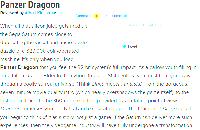
This validated how I felt about the game too. Before The Last of Us and God of War became critical and commercial juggernauts, before Halo broke entertainment sales records, and even before Metal Gear Solid blurred the line between cinema and videogames, Panzer Dragoon was blasting onto Saturn owners screens and delivering an experience where setting, story, score and cinematics were more in-line with a movie than traditional videogame.
While the Saturn never demonstrated the transformation in and of itself, we can see that what Panzer Dragoon piloted, the majority of the games industry would follow.
And while I seldom see it cited anywhere, Sony and Nintendo were taking notice, as you can feel Panzer Dragoon’s DNA in Star Fox 64 and Omega Boost.

Whether Panzer Dragoon did spearhead this change in the industry is up for debate, but what I’m sure we can agree on, is that Panzer Dragoon was a beautiful and ambitious title that not only pushed the boundaries of its genre, but was visually impressive and forward looking at the time.
It helps that Sega’s timeless arcade style game elevates the experience further, so taken as a whole, Panzer Dragoon was truly a marvel of it’s time, so early in the Sega Saturn’s life.
Remakes, sequels, spiritual successors and imitators may have followed, but few have captured the majesty of the original game, it’s world, it’s music, its gameplay and its magic.
Nearly the 30 years on, this classic is still casting a spell on Sega fans worldwide.
|
|
The MegaDriver |
| |
Husband, Father of 3, Analyst, Gamer and Half of The SegaGuys podcast.
Dan is a HUGE SEGA fan, and the Saturn is his favorite game console of all time! | |
|
| |
| |
|